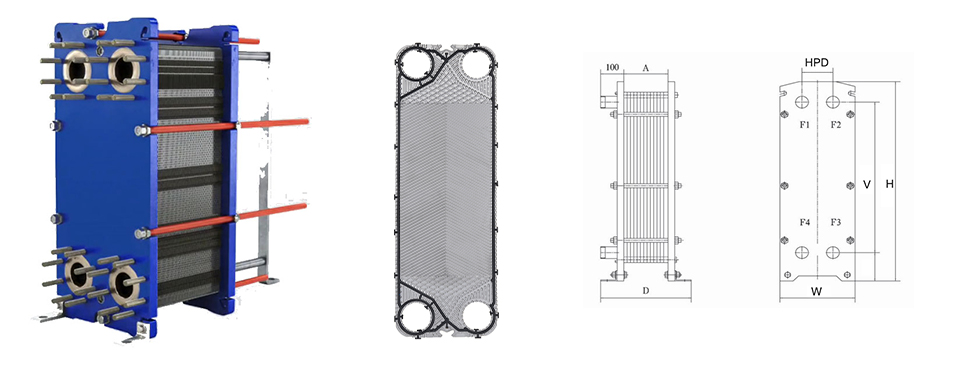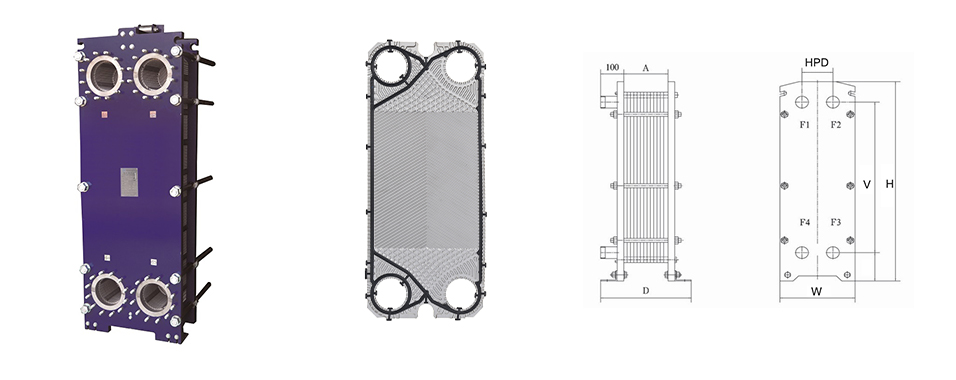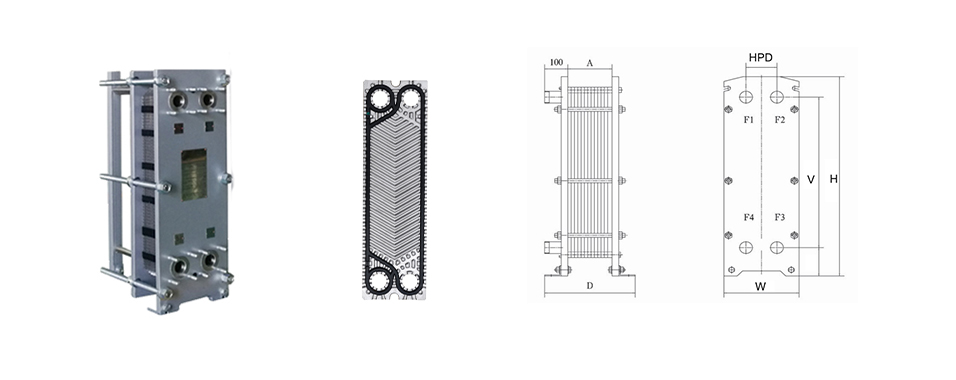Correct operation steps of plate heat exchanger
Many people don't know what to pay attention to when operating a plate heat exchanger. Let me introduce you to them.
1. Driving operation and precautions
1. When using on a new process pipeline, pay attention to clear the debris in the pipeline to avoid clogging the heat exchanger.
2. If sewage is used as the cooling medium, or the waste heat of the sewage is recovered, or the medium contains granular solids, a filter or decontamination device should be installed at the entrance of the heat exchanger to avoid clogging the heat exchanger.
3. When the cooling water (heating) water temperature exceeds 40℃, it should be softened as much as possible to prevent the heat exchanger from scaling and affecting the heat transfer effect.
4. Check whether the pipeline connection is correct, to avoid mixing of the two media, causing undesirable consequences.
5. Strictly check whether the inlet valve of the cold and heat medium is closed and the outlet valve is open before driving.
6. After finishing the above work, it can be turned on. When driving, start the cold and heat medium pumps, slowly open the cold medium water inlet valve, and then open the heat medium water inlet valve to make the medium flow into the heat exchanger slowly to avoid overheating.
7. Check all sealing surfaces and all welds for any abnormal phenomena such as leakage.
8. Slowly increase the temperature, and measure and calculate whether it meets the process requirements at the same time. After it is satisfied, normal operation can be entered.
2. Normal operation and inspection
1. Frequently check all the sealing surfaces and welds of the heat exchanger to observe whether there are any abnormal phenomena such as leakage. If a leak is found, mark the leak point in time and take care of it after shutdown.
2. Check the pressure gauge and thermometer regularly to observe if there is any abnormality.
3. When shutting down, first slowly close the inlet valves of the cold and hot media, and then close the outlet valves of the two media. When the machine is turned on, the situation is just the opposite. First open the water outlet valve, and then slowly open the water inlet valve.
4. The medium on the low pressure side should be tested regularly to avoid mixing of the medium on the high pressure side. If it is mixed in, it means that internal leakage has occurred and the treatment should be stopped.
3. Shutdown operation and precautions
1. Before stopping the machine, the pump must be stopped and the power supply must be cut off.
2. After stopping the pump, first slowly close the heating medium inlet valve, and then close the cold medium inlet valve. Finally, close the outlet valves of the two media.
3. If a vent valve is installed in the pipeline, it should be opened.
4. For media with higher temperature and corrosive media, the equipment should be emptied as much as possible when the equipment is opened to avoid burning and corrosion of the equipment.
1. Driving operation and precautions
1. When using on a new process pipeline, pay attention to clear the debris in the pipeline to avoid clogging the heat exchanger.
2. If sewage is used as the cooling medium, or the waste heat of the sewage is recovered, or the medium contains granular solids, a filter or decontamination device should be installed at the entrance of the heat exchanger to avoid clogging the heat exchanger.
3. When the cooling water (heating) water temperature exceeds 40℃, it should be softened as much as possible to prevent the heat exchanger from scaling and affecting the heat transfer effect.
4. Check whether the pipeline connection is correct, to avoid mixing of the two media, causing undesirable consequences.
5. Strictly check whether the inlet valve of the cold and heat medium is closed and the outlet valve is open before driving.
6. After finishing the above work, it can be turned on. When driving, start the cold and heat medium pumps, slowly open the cold medium water inlet valve, and then open the heat medium water inlet valve to make the medium flow into the heat exchanger slowly to avoid overheating.
7. Check all sealing surfaces and all welds for any abnormal phenomena such as leakage.
8. Slowly increase the temperature, and measure and calculate whether it meets the process requirements at the same time. After it is satisfied, normal operation can be entered.
2. Normal operation and inspection
1. Frequently check all the sealing surfaces and welds of the heat exchanger to observe whether there are any abnormal phenomena such as leakage. If a leak is found, mark the leak point in time and take care of it after shutdown.
2. Check the pressure gauge and thermometer regularly to observe if there is any abnormality.
3. When shutting down, first slowly close the inlet valves of the cold and hot media, and then close the outlet valves of the two media. When the machine is turned on, the situation is just the opposite. First open the water outlet valve, and then slowly open the water inlet valve.
4. The medium on the low pressure side should be tested regularly to avoid mixing of the medium on the high pressure side. If it is mixed in, it means that internal leakage has occurred and the treatment should be stopped.
3. Shutdown operation and precautions
1. Before stopping the machine, the pump must be stopped and the power supply must be cut off.
2. After stopping the pump, first slowly close the heating medium inlet valve, and then close the cold medium inlet valve. Finally, close the outlet valves of the two media.
3. If a vent valve is installed in the pipeline, it should be opened.
4. For media with higher temperature and corrosive media, the equipment should be emptied as much as possible when the equipment is opened to avoid burning and corrosion of the equipment.








